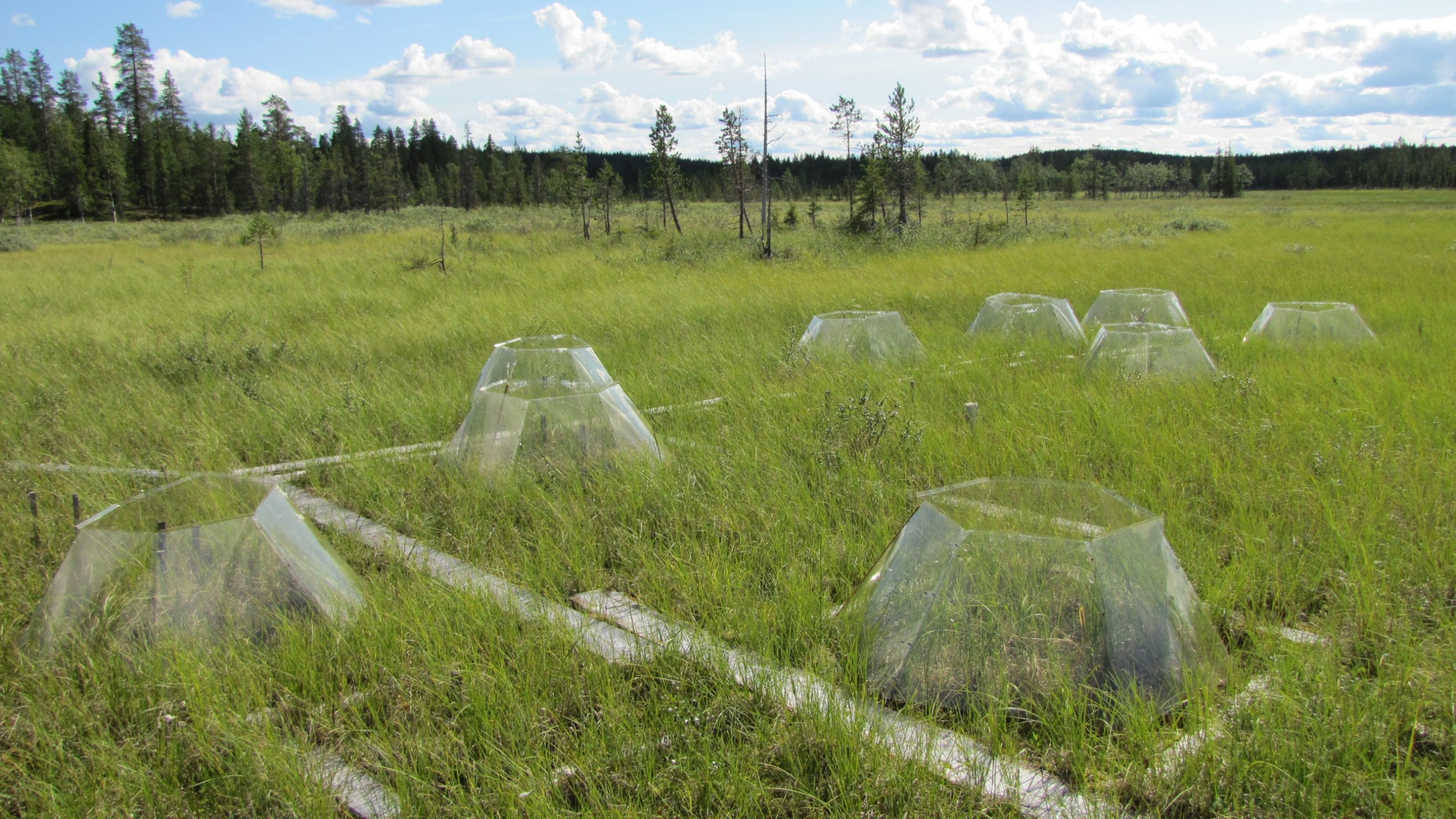Peatlands interact with climate through the uptake and release of greenhouse gases (GHGs). Since peatlands store large amounts of organic matter in their soils, they represent stores of carbon. This carbon has been taken out of the atmosphere as carbon dioxide (CO2) by peatland plants in the process of photosynthesis.
Once deposited in the soils, this carbon accumulates due to the slow rate of decay in the water-saturated soils. Some CO2 is released by plant respiration and the slow litter decomposition (also called microbial respiration), but without disturbance, peatlands have a net uptake of CO2 (Limpens et al., 2008). This removal of CO2 from the atmosphere has a cooling effect.
Water-saturated soils lead to slow decay because there is little oxygen available for the microbes that breakdown organic materials. In these low oxygen conditions, one of the products of decay is methane (CH4), a potent GHG. Because peatlands have wet soils, they represent a globally significant source of CH4 – accounting for about 10% of all global emissions.

This emission of CH4 has a warming effect on the atmosphere, but the lifetime of CH4 in the atmosphere is much shorter than for CO2. Therefore, over short time periods, many peatlands may have a net warming effect on the atmosphere when both the uptake CO2 and release of CH4 are considered (Whiting and Chanton, 2001).
But, over longer time periods, the effect of CH4 emissions reaches an equilibrium, and the uptake of CO2 becomes more important – most peatlands are then net coolers of the atmosphere over long time scales (Whiting and Chanton, 2001). For example, the development of northern peatlands over the last 10,000-14,000 years has had a net cooling effect on the globe (Frolking and Roulet, 2007).
Peatlands can also act as a source of nitrous oxide (N2O), also a potent GHG. In an undisturbed state, losses of N2O from most peatlands are small (Martikainen et al., 1993). However, drainage and fertilization of peatlands can greatly increase N2O emissions, making an important contribution to the peatland GHG balance (Pärn et al., 2018).
Ongoing climate change may affect the ability of peatlands to take up and store carbon and GHGs. Warmer soils increase the rate of organic material decay and this may result in the release of the carbon stored in peatland soils. Changes in hydrologic conditions (e.g., how wet the soil remains) will also affect how quickly organic material decays and the types of plants that grow on the peatland surface.
The balance between these changing conditions will ultimately determine future rates of carbon and GHG exchange and whether peatland remain as net coolers of the atmosphere (Strack et al., 2006). Many studies to date highlight that feedbacks with peatland ecosystems make them somewhat resilient to climate change (Waddington et al., 2015).
However, climate change can result in acceleration of other disturbances that could destabilize peatland carbon stocks. For example, thawing of permafrost in boreal and subarctic peatlands can quickly liberate large amounts of carbon from peatland soils (Jones et al., 2017). Warmer temperatures are also changing wildfire regimes, with droughts making peatlands more susceptible to burning (Turetsky et al., 2014). More frequent fires can convert peatlands from net sinks for carbon and GHGs to net sources.
Human use of peatlands also alters rate of GHG exchange. Drainage for agriculture, forestry and peat extraction leads to drier conditions in the soil and this speeds of the rate of decay. These soils become a source of CO2 (IPCC, 2014; Wilson et al., 2016). At the same time CH4 emissions usually decline, but remain high from drainage ditch areas (IPCC, 2014). Despite this reduction in CH4 emissions, the large CO2 emissions mean that these peatlands are warming the atmosphere due to GHG emissions. This is further accelerated if N2O emissions are also enhanced by drainage and fertilization.
Drained peatlands are also more susceptible to wildfire, with the potential for massive GHG emissions (Page et al., 2009). Therefore, better peatland management can be an important climate change mitigation strategy (Leifeld and Menichetti, 2018).
Rewetting and restoration of peatlands reduces soil carbon losses and GHG emissions (Wilson et al., 2016) and reduces the risk of large carbon losses by lowering wildfire susceptibility (Granath et al., 2016).
